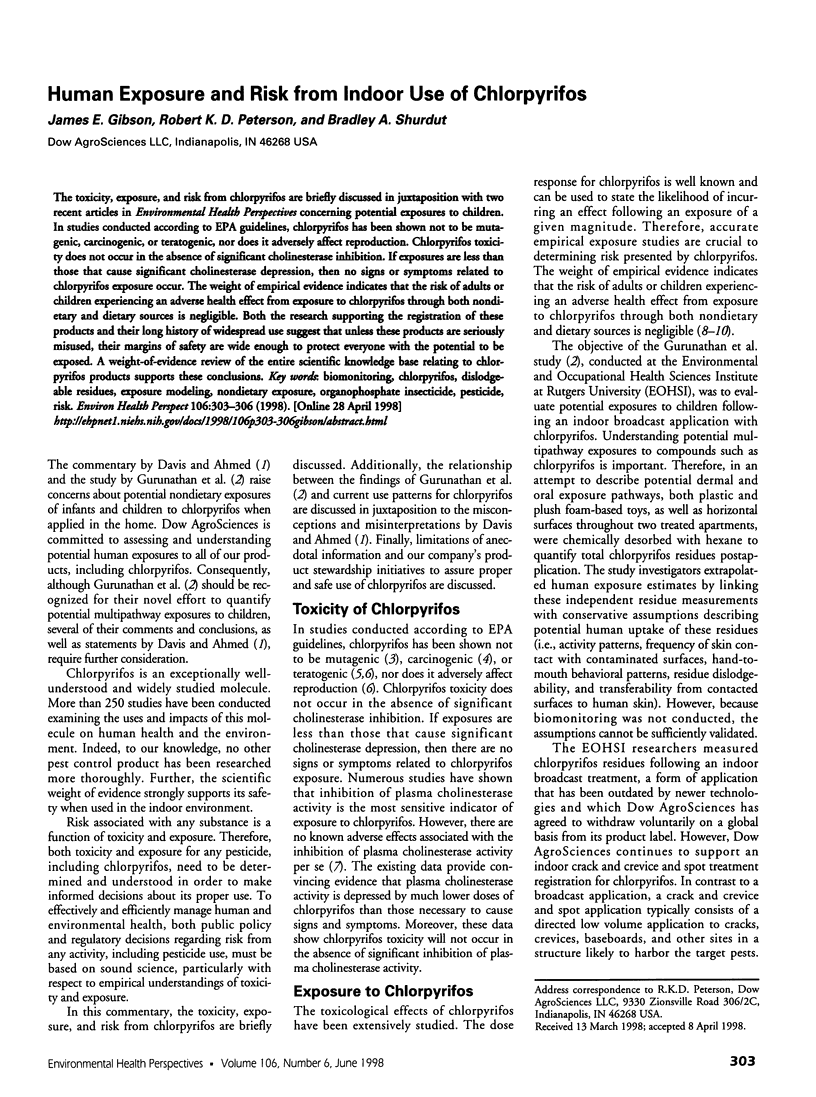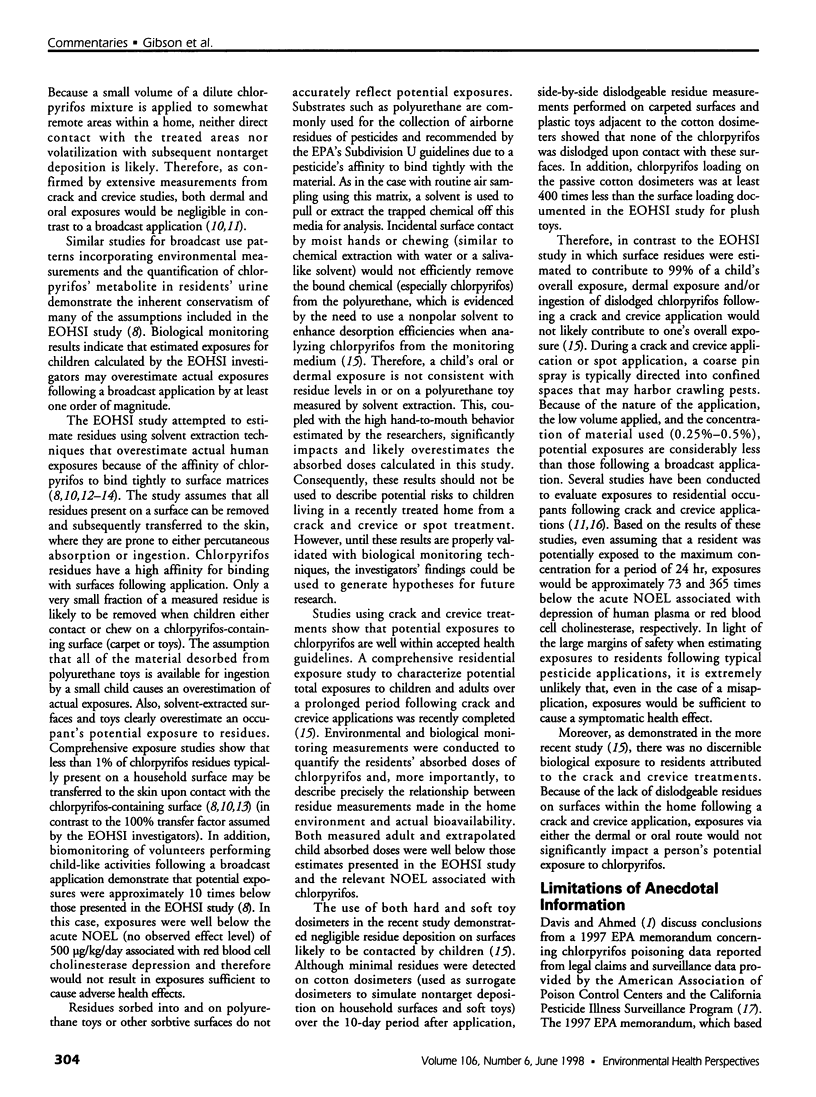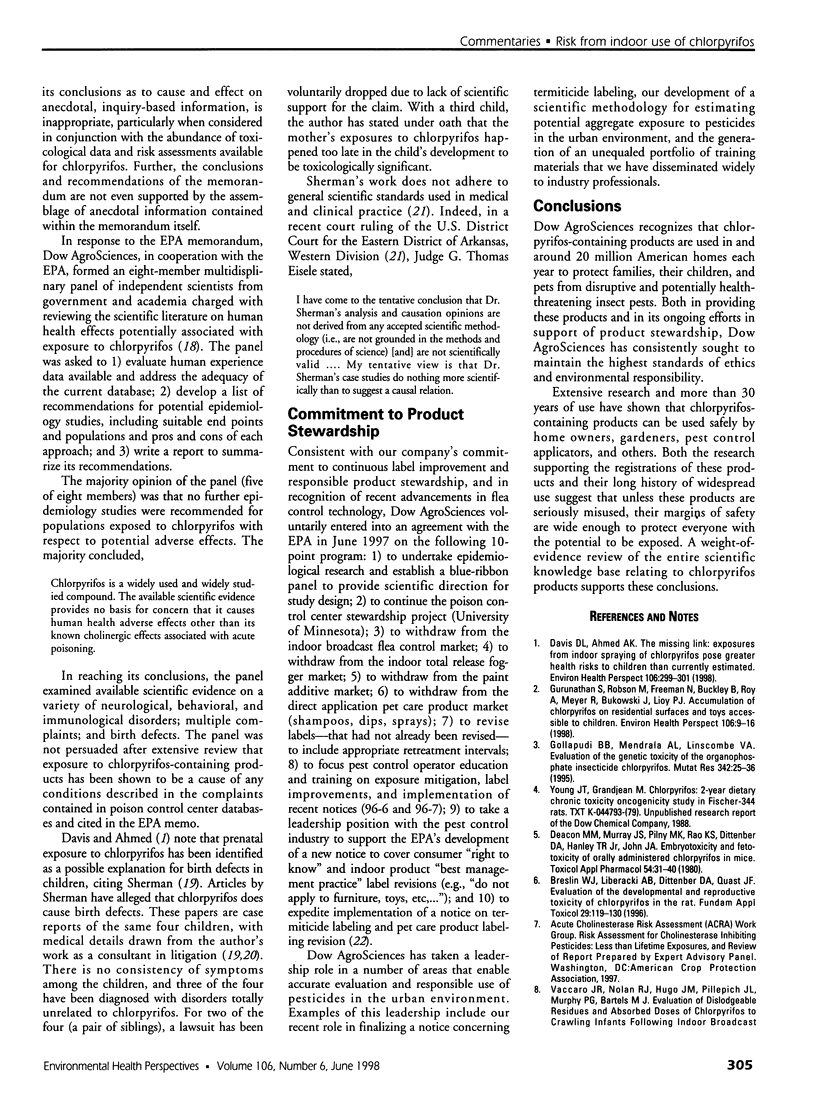Abstract
The toxicity, exposure, and risk from chlorpyrifos are briefly discussed in juxtaposition with two recent articles in Environmental Health Perspectives concerning potential exposures to children. In studies conducted according to EPA guidelines, chlorpyrifos has been shown not to be mutagenic, carcinogenic, or teratogenic, nor does it adversely affect reproduction. Chlorpyrifos toxicity does not occur in the absence of significant cholinesterase inhibition. If exposures are less than those that cause significant cholinesterase depression, then no signs or symptoms related to chlorpyrifos exposure occur. The weight of empirical evidence indicates that the risk of adults or children experiencing an adverse health effect from exposure to chlorpyrifos through both nondietary and dietary sources is negligible. Both the research supporting the registration of these products and their long history of widespread use suggest that unless these products are seriously misused, their margins of safety are wide enough to protect everyone with the potential to be exposed. A weight-of-evidence review of the entire scientific knowledge base relating to chlorpyrifos products supports these conclusions.
Full text
PDF



Selected References
These references are in PubMed. This may not be the complete list of references from this article.
- Breslin W. J., Liberacki A. B., Dittenber D. A., Quast J. F. Evaluation of the developmental and reproductive toxicity of chlorpyrifos in the rat. Fundam Appl Toxicol. 1996 Jan;29(1):119–130. doi: 10.1006/faat.1996.0013. [DOI] [PubMed] [Google Scholar]
- Davis D. L., Ahmed A. K. Exposures from indoor spraying of chlorpyrifos pose greater health risks to children than currently estimated. Environ Health Perspect. 1998 Jun;106(6):299–301. doi: 10.1289/ehp.98106299. [DOI] [PMC free article] [PubMed] [Google Scholar]
- Gollapudi B. B., Mendrala A. L., Linscombe V. A. Evaluation of the genetic toxicity of the organophosphate insecticide chlorpyrifos. Mutat Res. 1995 Mar;342(1-2):25–36. doi: 10.1016/0165-1218(95)90087-x. [DOI] [PubMed] [Google Scholar]
- Gurunathan S., Robson M., Freeman N., Buckley B., Roy A., Meyer R., Bukowski J., Lioy P. J. Accumulation of chlorpyrifos on residential surfaces and toys accessible to children. Environ Health Perspect. 1998 Jan;106(1):9–16. doi: 10.1289/ehp.981069. [DOI] [PMC free article] [PubMed] [Google Scholar]
- Hill R. H., Jr, Head S. L., Baker S., Gregg M., Shealy D. B., Bailey S. L., Williams C. C., Sampson E. J., Needham L. L. Pesticide residues in urine of adults living in the United States: reference range concentrations. Environ Res. 1995 Nov;71(2):99–108. doi: 10.1006/enrs.1995.1071. [DOI] [PubMed] [Google Scholar]
- Wright C. G., Jackson M. D. Insecticide residues in non-target areas of rooms after two methods of crack and crevice application. Bull Environ Contam Toxicol. 1975 Jan;13(1):123–128. doi: 10.1007/BF01684875. [DOI] [PubMed] [Google Scholar]
- Wright C. G., Leidy R. B. Chlorpyrifos residues in air after application to crevices in rooms. Bull Environ Contam Toxicol. 1978 Mar;19(3):340–344. doi: 10.1007/BF01685808. [DOI] [PubMed] [Google Scholar]


